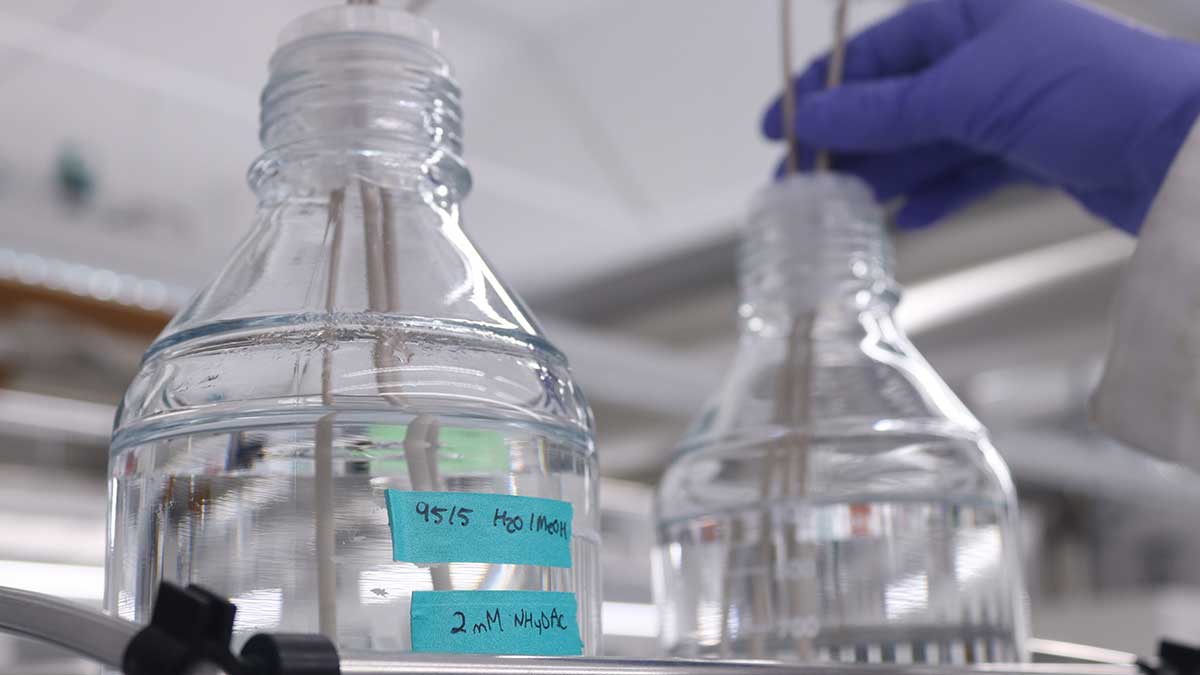Researchers want the federal government to move forward more quickly with regulations covering the use of dangerous toxins found in many everyday products in light of research showing how widespread they are in the environment.
One of the most commonly found toxins are per-and polyfluoroalkyl substances (PFAS). These ‘forever chemicals’ can be found in many products, from plastic eye shadow containers to non-stick frying pans. They have been found in drinking water, soil, food and elsewhere in our environment.
A recent Carleton University study examining toxins found in personal-care products purchased in Canada found startlingly high levels.
“New proposed Canadian PFAS regulations will set a threshold level at one microgram per gram in products,” said the study. “This means that PFAS at or below this level would be incidental and the prohibition would not apply. Yet we found that some products contained PFAS — including those prohibited from use — at levels a thousand times higher than the incidental level — pointing towards a lack of oversight when it comes to managing PFAS in the personal care product industry.”
New regulations are under consideration but have not been completed yet. Some researchers say it’s time to move more quickly.
“I don’t believe that the onus should be on the consumer to sit and check for every single product that they use,” said Amira Aker, a post-doctoral fellow in environmental epidemiology at the University of Laval. “The onus should be put on the industry to find good alternatives.”
Aker said PFAS have multiple negative health outcomes including a change in cholesterol levels, a change in the effectiveness of vaccines and an association with liver cancer and other disease.
The regulation of PFAS has been difficult because the regulatory systems are looking at each form of PFAS individually. Chemical regulation is a lengthy process. Toxicity via environmental or human health needs to be proven before a chemical can be regulated, Aker said.
“When an industry comes up with a new chemical, they don’t really have to prove that this chemical is safe. They put it out to the market, we run our studies and start to see all these different health impacts. We find something is toxic and then it gets regulated,” said Aker.
Researchers, including Aker, suspect that the use of makeup and other personal care products containing PFAS is more harmful because of direct skin contact with the contaminant.
“Dermal absorption is quite an important source of exposure. Waterproof mascara is a pretty big source of PFAS. The fact that it is right near your eyeballs could also be an important source of exposure,” said Aker.
However, she says that they still do not have enough evidence to say it with total confidence.
“It’s about making smarter decisions without letting it dictate your life,” said Aker. She explains that if you have the financial capacity to do so, look for cleaner and more holistic products. This includes avoiding products like waterproof mascara.
The federal government has released a draft report analyzing PFAS, and the “growing body of evidence that exposure to other PFAS can lead to adverse effects on the environment and human health.”
“As research to fully address the gaps in information for less-studied PFAS cannot realistically be conducted in a time frame that prevents further environmental releases, a precautionary, class-based approach to addressing PFAS is needed to protect the environment and people from anticipated adverse effects,” according to the draft report.
The report is the first step to regulating more strands of the use and creation of PFAS.
It has been done before. Health Canada says risk management measures for a subclass of PFAs — perfluorooctane sulfonate (PFOS) — have been in place since 2008.
“Since 2016, Canada has prohibited the manufacture, use, sale, offer for sale and import of other subclasses of PFAS (PFOS, perfluorooctanoic acid [PFOA] and long-chain perfluorocarboxylic acids [LC-PFCAs], their salts and their precursors) and products that contain them, with limited exemptions,” Health Canada’s Marie-Pier Burelle wrote in an email.
In April 2021, the federal government announced plans to “reduce releases of these substances to the Canadian environment so as not to cause adverse effects, and reduce exposure of the general population to these substances to levels that are protective of human health,” said Burelle.
Sierra Peskett, a PhD student specializing in toxicology at Carleton University, says that the toxins are nearly unavoidable, despite studies showing that they can lead to infertility and cancer.
“PFAS don’t … naturally break down,” said Peskett. “PFAS are also found throughout the environment because we created them,” she said.

When discussing what people can do to limit their exposure to PFA’s, Peskett says be mindful of products used and opt for the natural alternative. However, even if the product is all-natural, PFAS can seep into the item through the container. For example, a face cream can be made of all-natural ingredients but the plastic tube may be full of PFAs that bleed into the product.
“As [PFAS] leach into the skin it can bioaccumulate over time (meaning that the more we use it the more it builds up),” said Carleton University PhD student Risha Minocha-Mckenney by email.
There are a few types of toxicities that can potentially occur, such as “immunotoxicity, tumor aggregation and for a fetus, neural behavioral defects,” wrote Minocha-Mckenney, who studies chemical and environmental toxicology.
Despite the harms, PFAS are intentionally added to firefighting equipment, textiles, non-stick cookware, and some takeout food packaging.
Some cosmetics too intentionally use PFAS, while others unintentionally contain the chemicals. This can occur due to a contaminated container and tools used to make the product. This means that the toxins in the cosmetics will not be listed as an ingredient, because they were not purposely added.
Peskett says to lower exposure to PFAS, be aware of the ingredients in everyday makeup and hygiene products, and choose the natural and “clean” options.
Consumer Reports and the U.S. Environmental Protection Agency have suggestions for limiting exposure to these chemicals, while the David Suzuki Foundation has a list of cosmetic chemicals that Canadians should watch out for and avoid. Alternative makeup and hygiene products are available at local and holistic shops around Ottawa and Canada.
“I have also come to accept that it is all around us. I’m never going to be able to get my exposure to an absolute zero,” said Peskett.




